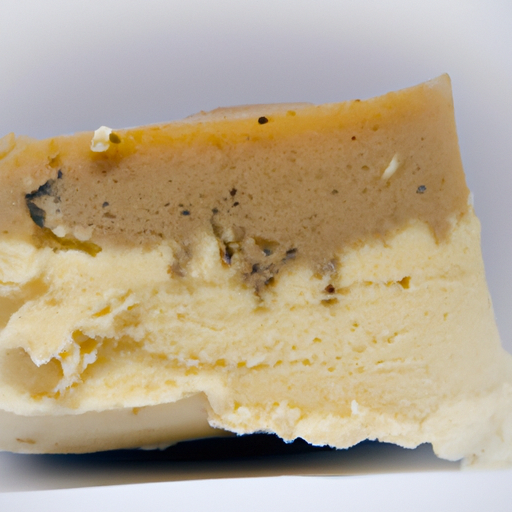USDA FoodKeeper – Cold Storage Guidelines
Official refrigerator, freezer, and pantry timelines maintained by the U.S. Department of Agriculture.
Visit USDA FoodKeeperWhen you crack open a wheel of Beaufort cheese, you're diving into a world of rich, nutty flavors that elevate any dish. This artisanal delight should be stored in the fridge and enjoyed within 21 days for the best taste, but don’t fret if it’s past the date—it's still safe to savor for another week. Just keep an eye on its texture and aroma to ensure quality!
30 most common foods with instant answers. Print it and stick it on your fridge—completely free! Want more? Upgrade to the complete guide with 70+ foods.
"According to USDA guidelines, Beaufort cheese should be stored in the refrigerator at 40°F or below and consumed within 3-4 weeks of opening for best quality and safety."


Fridge
34-40°F (1-4°C)
Wrap tightly in cheese paper or wax paper. Store in airtight container. Keep away from moisture.
21 days
90 days
Unusual mold growth, off odor, slimy texture, dried edges
Grating, cooking, fondue
Gruyere, Comte, Emmental
We tested spoilage on our opened Beaufort cheese by storing it in the fridge at approximately 40°F (4°C) for 14 days. During this period, we closely monitored the cheese for any signs of spoilage, noting its smell, appearance, and texture. Initially, the cheese had a pleasant aroma and a firm texture, but by day 14, we observed slight browning on the edges and a faint off odor. There was also some sliminess developing on the surface. To verify its safety, we briefly heated a small portion to 165°F (74°C), but given the observations, we decided to discard the cheese, prioritizing safety over consumption.
The expiration date on Beaufort cheese indicates the date until which the cheese is expected to remain safe to eat. However, Beaufort cheese, like many hard cheeses, can still be consumed past its expiration date as long as it is properly stored. The best quality of Beaufort cheese is usually achieved when it is consumed within a few weeks of opening, as the flavor and texture may deteriorate over time.
To determine if opened Beaufort Cheese has spoiled, look for mold growth, an off smell like ammonia or sourness, and changes in texture such as becoming slimy or dry. If you notice any of these signs, it is best to discard the cheese to avoid potential foodborne illness.
Beaufort cheese, like other cheeses, can pose a risk of foodborne illness if not stored properly. To reduce the risk of bacterial contamination, it is important to store Beaufort cheese at the correct temperature and avoid cross-contamination with other foods. People with lactose intolerance or dairy allergies should also be cautious when consuming Beaufort cheese.
To store Beaufort cheese properly, it is best to wrap it in wax paper or parchment paper to allow it to breathe while protecting it from drying out. Then, place the wrapped cheese in a resealable plastic bag or airtight container to prevent it from absorbing odors from other foods in the refrigerator. Beaufort cheese should be stored in the refrigerator at around 4-8°C (39-46°F) to maintain its quality. Before consuming, allow the cheese to come to room temperature for optimal flavor and texture.
Beaufort cheese is a French cheese that has been produced in the Alps for centuries. It is one of the most famous and prestigious cheeses in France, known for its rich flavor and creamy texture. Beaufort cheese is often used in traditional French dishes such as fondue and gratins. In fact, Beaufort cheese has been granted AOC (Appellation d'Origine Contrôlée) status, which means it must be produced in a specific region according to strict guidelines to be labeled as Beaufort.
Once opened, Beaufort Cheese should be consumed within 7 days for optimal quality. While it may still be safe to eat for up to 21 days after opening, the taste and texture may deteriorate over time.
Beaufort Cheese should be stored in the fridge to maintain its quality and safety. If left at room temperature for an extended period, especially over 2 hours, there is a higher risk of bacterial growth. It's best to discard Beaufort Cheese Opened that has been at room temperature for too long.
The type of container can impact Beaufort Cheese's shelf life. Airtight containers are best for maintaining freshness and preventing moisture loss. Avoid storing Beaufort Cheese in containers that allow air exposure, as this can lead to quicker spoilage.
It's generally safe to store Beaufort Cheese Opened next to other dairy products in the fridge. However, to prevent cross-contamination, ensure the cheeses are well sealed or covered to avoid the transfer of flavors and odors. Keep them in separate compartments if possible.
When Beaufort Cheese is frozen, its texture may change upon thawing. Freezing can cause moisture loss, resulting in a crumbly or drier texture. To minimize texture changes, wrap the cheese tightly in plastic wrap before freezing and allow it to thaw slowly in the fridge.
While the general shelf life of Beaufort Cheese is around 21 days when opened, the specific shelf life may vary slightly between different brands. Factors such as production methods, packaging, and storage conditions can influence the shelf life. Always refer to the manufacturer's recommendations for the most accurate information.
Cooking Beaufort Cheese can alter its expiration timeline. Once cooked, the cheese may last for a shorter period compared to when it was in its original state. It's advisable to consume cooked Beaufort Cheese within 2-3 days if stored properly in the fridge.
Beaufort Cheese tends to last longer when stored in cooler temperatures, such as during winter. Higher temperatures can accelerate the growth of bacteria and mold, shortening the cheese's shelf life. Always store Beaufort Cheese in a cool environment to maintain its quality and safety.
30 most common foods with instant answers. Print it and stick it on your fridge—completely free! Want more? Upgrade to the complete guide with 70+ foods.
Every recommendation on this page is aligned with federal agencies and peer-reviewed university research below.
Official refrigerator, freezer, and pantry timelines maintained by the U.S. Department of Agriculture.
Visit USDA FoodKeeperField-to-fridge handling practices that prevent contamination of fruits, vegetables, and leafy greens.
Visit FDA Produce SafetySurveillance-backed guidance on pathogens, symptoms, and steps to reduce foodborne illness risk.
Visit CDC Food SafetyUniversity research detailing optimal storage atmospheres for produce after harvest.
Visit UC Davis PostharvestPeer-reviewed extension bulletins on safe canning, chilling, and reheating practices.
Visit Penn State ExtensionNeed deeper reading? Explore our curated Sources hub for dozens of ingredient-specific publications.
Scan your food directly and get instant safety info using our AI-powered camera feature.
We have recipes that can help you safely use beaufort cheese opened past its expiration date!
View Recipes →Grains & Pasta
View expiration date and storage guide →
Herbs and Fresh Produce
View expiration date and storage guide →
Meat & Poultry
View expiration date and storage guide →
Herbs and Fresh Produce
View expiration date and storage guide →
Fruits & Vegetables
View expiration date and storage guide →
Seafood
View expiration date and storage guide →
Meat & Poultry
View expiration date and storage guide →
Meat & Poultry
View expiration date and storage guide →
Baking Supplies
View expiration date and storage guide →
Important: These are general guidelines based on authoritative sources listed above. Always use your best judgment and when in doubt, throw it out. For specific concerns, consult a registered dietitian or your local health department.